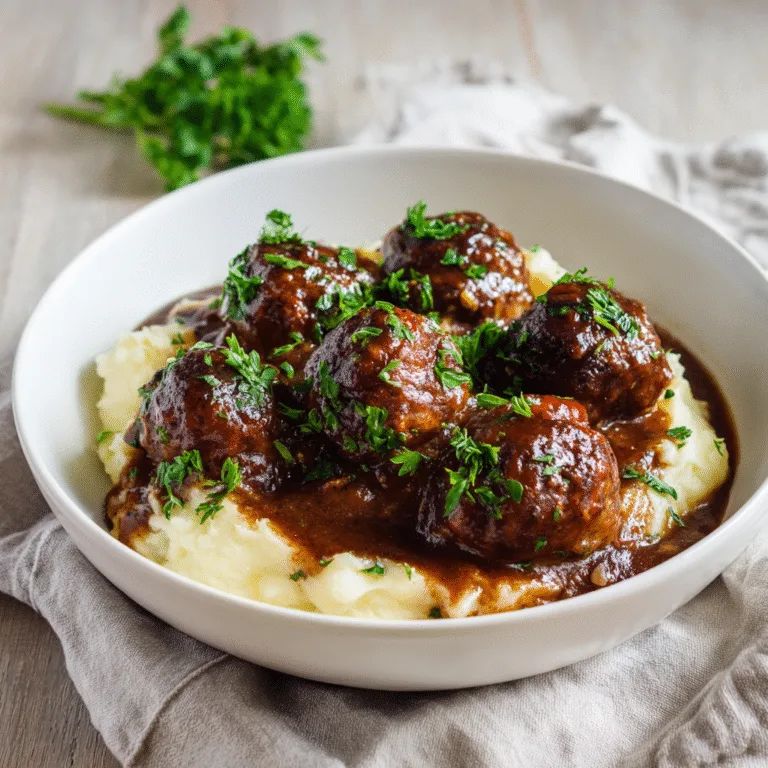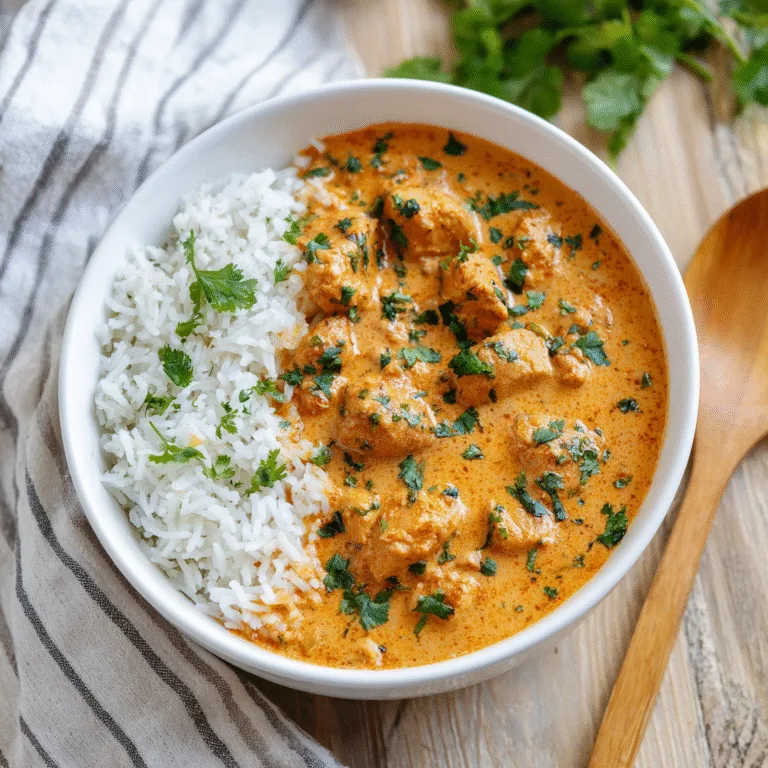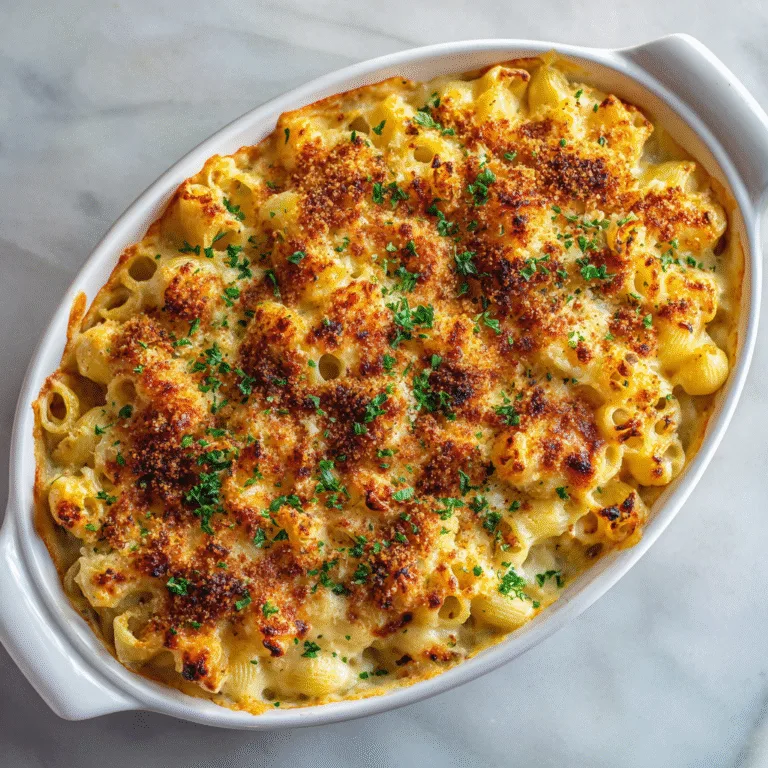Apple Cider Braised Pork Shoulder – A Gourmet Fall Classic
When autumn arrives, there is a profound comfort in food that warms both the body and the soul. Among the seasonal classics, few dishes embody that cozy sophistication quite like a perfectly braised Apple Cider Pork Shoulder. This recipe transforms a humble cut of pork into a tender, aromatic masterpiece, infused with the sweet and tangy depth of apple cider, and elevated with nuanced seasonings that honor the elegance of slow cooking.
Whether served at an intimate dinner party, a refined family gathering, or an elevated bistro-style evening at home, this dish promises not only visual appeal but a cascade of flavors that linger long after the last bite.
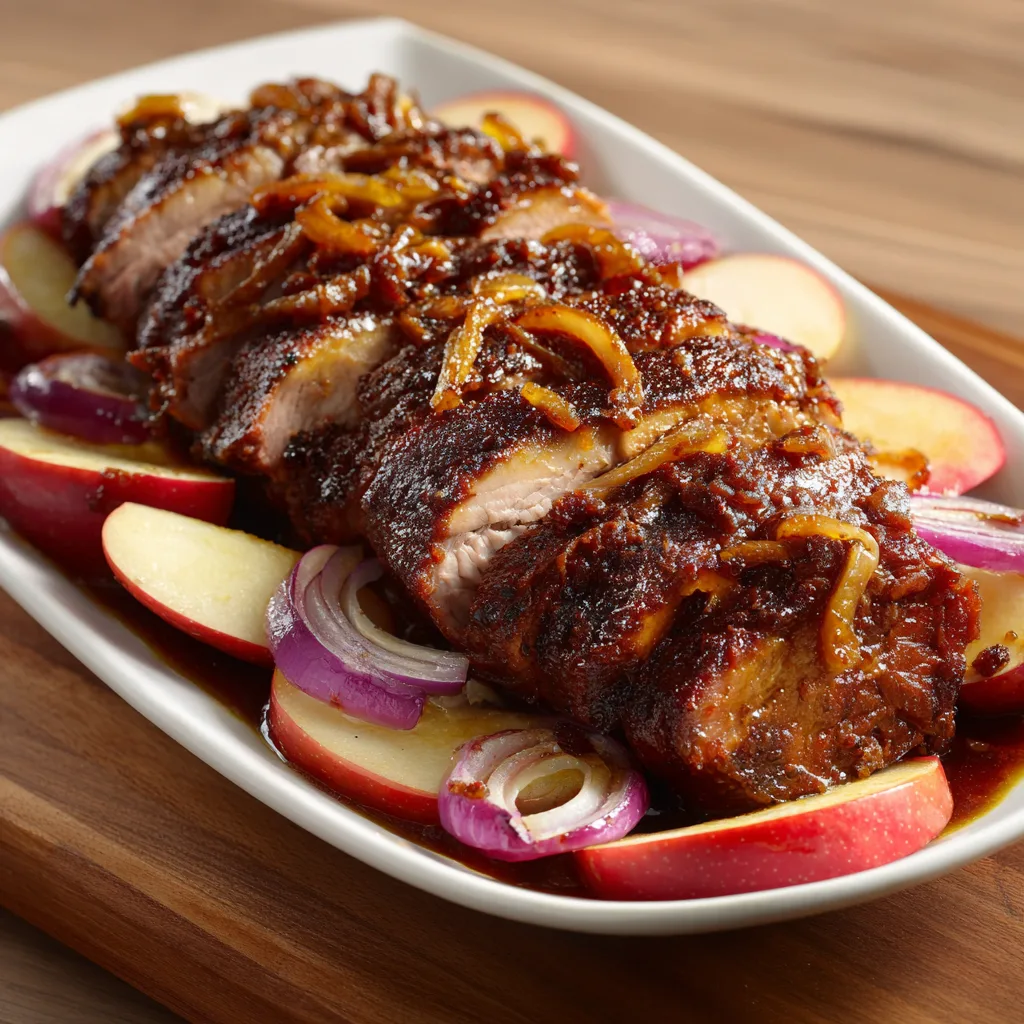
The Elegance of Slow Cooking
The beauty of braising lies in its simplicity and precision. It is a culinary method that allows tougher cuts of meat to develop rich, complex flavors while becoming irresistibly tender. Pork shoulder, with its marbled fat and substantial texture, is particularly suited for this method. The long, gentle cooking process transforms it into succulent, fork-tender slices or pull-apart strands that are rich in flavor yet delicate in the mouth.
In this recipe, the apple cider serves as both a braising liquid and flavor enhancer. Its natural sweetness balances the savory notes of pork, while subtle acidity tenderizes the meat, ensuring a luscious mouthfeel. Complemented by aromatics such as onions, garlic, and fresh herbs, this dish transcends everyday comfort food and becomes an experience of culinary refinement.
Selecting the Perfect Pork Shoulder
For this dish, selecting the right cut is paramount:
- Bone-in vs. Boneless: A bone-in shoulder delivers additional depth of flavor and moisture during braising. The marrow subtly infuses the liquid, enriching the final sauce. Boneless works beautifully as well, offering easier carving and presentation.
- Marbling: Look for a cut with good fat distribution. Fat is flavor. It renders slowly during cooking, enhancing the tenderness and providing a silky texture to the braising liquid.
- Size: A 4–5 lb shoulder is ideal for 6–8 servings. Adjust cooking time proportionally for larger cuts.
Ingredients (Dash Format)
- 4–5 lb pork shoulder (bone-in or boneless)
- 2 tbsp olive oil
- Salt & black pepper, to taste
- 1 large onion, sliced
- 3 garlic cloves, minced
- 2 apples, sliced
- 2 cups apple cider
- 1 cup chicken broth
- 2 tbsp apple cider vinegar
- 2 tbsp Dijon mustard
- 1 tbsp brown sugar (optional)
- 2 bay leaves
- 1 tsp dried thyme (or 3 sprigs fresh)
- 1 tsp smoked paprika (optional)

Apple Cider – The Star Ingredient
Not all apple ciders are created equal. For this recipe:
- Use 100% pure apple cider, not vinegar or sweetened juice blends. The subtle natural acidity and sweetness of cider create a tender, aromatic braising liquid that complements the pork without overpowering it.
- Optional Additions: A splash of hard cider or dry white wine can add complexity for a sophisticated palate.
The cider’s flavor is gently enhanced by the caramelization of apples and onions during the braising process, creating a luxurious sauce that can be spooned over the finished meat.
Aromatics & Seasoning
Flavor layering is key to a chef-quality braised dish:
- Onions and garlic: Their natural sweetness deepens during cooking, creating a rich flavor base.
- Fresh herbs: Bay leaves and thyme lend subtle herbal notes that elevate the cider and pork pairing.
- Spices: Smoked paprika or a hint of cinnamon adds warmth and a delicate autumnal aroma.
- Optional brown sugar: Enhances caramelization of the apples and balances acidity, creating a silky, slightly sweet sauce.
Each element is carefully chosen to complement, not compete, allowing the pork’s natural flavor to remain central.
Preparing the Pork Shoulder
- Pat Dry & Season: Begin by patting the pork shoulder completely dry. This ensures proper searing, which locks in flavors. Season generously with salt and black pepper, the foundation of seasoning in any premium dish.
- Searing: Heat olive oil in a heavy Dutch oven or stainless steel pan. Sear the pork on all sides until golden brown. This Maillard reaction develops rich, complex flavors in the crust, which will enhance the final braise.
- Layering Aromatics: After removing the pork, cook onions, garlic, and apple slices in the same pan to capture the fond—the browned bits left behind from searing. This step is essential for a sauce with depth and character.

Braising Technique
- Deglazing & Liquid Addition: Add apple cider, chicken broth, Dijon mustard, apple cider vinegar, and optional brown sugar to the pan. Stir to lift the fond and create a unified, flavorful base.
- Herbs & Seasoning: Add bay leaves, thyme, and smoked paprika. Allow the liquid to gently come to a simmer, then return the pork shoulder to the pot.
- Slow Cooking: Cover the pot with a tight-fitting lid and place in a 325°F (160°C) oven. Braise for 3 to 4 hours, occasionally basting. The slow, gentle heat allows connective tissue to break down, producing melt-in-your-mouth pork.
Chef Tips for Perfect Results
- Check Liquid Level: Ensure the braising liquid covers at least 1/3 of the pork. Too little liquid risks drying; too much dilutes flavors.
- Layer Apples Strategically: Place some apples beneath the pork to act as a flavor bed and the rest on top for presentation.
- Resting: Let the pork rest 10–15 minutes before slicing. This retains juices and enhances tenderness.
- Shredding Option: For an informal presentation, shred the pork gently with forks, mixing in some of the reduced braising liquid for luxurious, juicy strands.
Sauce & Finishing
After removing the pork, reduce the braising liquid on the stovetop for 5–10 minutes to concentrate flavors and achieve a glossy finish. For added elegance:
- Skim excess fat for a refined sauce.
- Strain or leave chunky with apples and onions for rustic sophistication.
- Finish with a small knob of butter for richness and shine.
Serving & Presentation
Presentation matters in premium culinary dishes:
- Plating: Slice the pork shoulder into thick, elegant portions. Arrange on a warm platter. Spoon apples, onions, and sauce over the top.
- Garnishes: Fresh thyme sprigs, microgreens, or thin apple slices enhance visual appeal.
- Accompaniments: Pair with creamy mashed potatoes, polenta, roasted root vegetables, or buttery egg noodles for balanced textures and flavors.
Variations for the Refined Palate
- Cider-Wine Fusion: Replace 1 cup of cider with dry white wine for an aromatic complexity.
- Autumn Spice Enhancement: Add a pinch of ground allspice or cinnamon for subtle warmth.
- Caramelized Finish: Roast apples and onions separately until lightly caramelized before serving.
- Maple Twist: Incorporate a teaspoon of pure maple syrup to the braising liquid for nuanced sweetness.
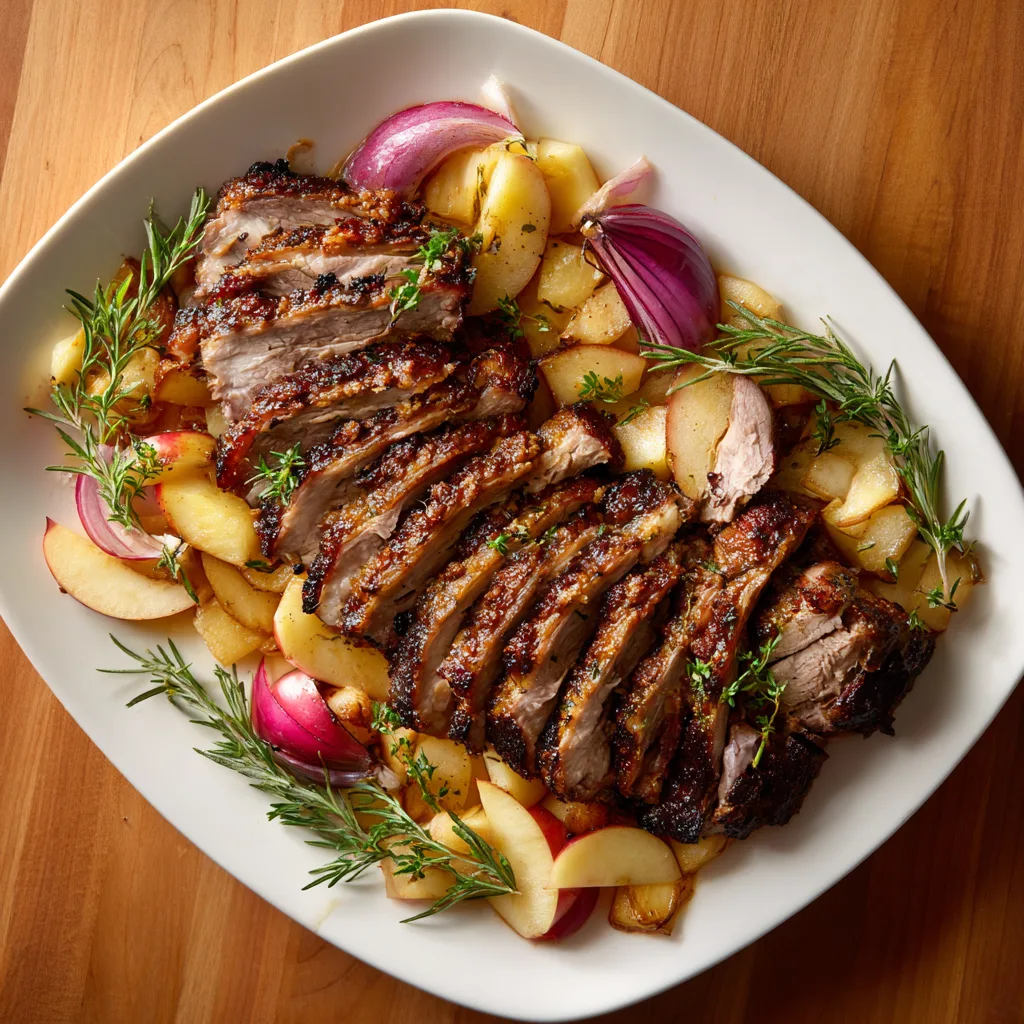
Apple Cider Braised Pork Shoulder
Ingredients
Equipment
Method
- Preheat oven to 325°F (160°C).
- Pat pork shoulder dry and season generously with salt and black pepper.
- Heat olive oil in a Dutch oven; sear pork on all sides until golden brown. Remove and set aside.
- Add onions, garlic, and apple slices to the pot; sauté briefly until aromatic.
- Stir in apple cider, chicken broth, apple cider vinegar, Dijon mustard, brown sugar, thyme, bay leaves, and smoked paprika. Bring to gentle simmer.
- Return pork to pot, cover, and braise in oven for 3 to 4 hours until fork-tender.
- Remove pork, reduce braising liquid on stovetop 5-10 minutes to create sauce.
- Slice or shred pork and serve with apples, onions, and braising sauce.
Notes
Storage, Reheating & Meal Prep
- Refrigeration: Store leftovers in an airtight container for up to 3–4 days.
- Freezing: Pork shoulder freezes beautifully in braising liquid for up to 3 months. Reheat gently in a covered pan over low heat.
- Reheating Tip: Avoid microwave reheating for best texture. Use gentle stovetop warming to maintain moisture and tenderness.
Gourmet Tips for Seasonal Pairings
- Wine Pairing: A crisp Riesling or lightly oaked Chardonnay complements the sweet-savory apple flavors.
- Side Pairing: Serve with lightly sautéed green beans, roasted Brussels sprouts, or caramelized shallots.
- Bread Accompaniment: Fresh artisan bread or soft dinner rolls can elegantly mop up the sauce.
Ingredient Substitutions & Notes
- Pork Substitute: Country-style pork ribs work for smaller portions; avoid leaner cuts like tenderloin.
- Cider Substitute: Hard apple cider or pear cider may be used for depth.
- Sweetener Substitute: Maple syrup or coconut sugar can replace brown sugar for refined flavors.
- Broth: Vegetable broth may replace chicken broth for a lighter braise.
Frequently Asked Questions
Q: Can I make this in a slow cooker?
A: Yes. Sear pork first, then place in slow cooker with all ingredients. Cook on low 6–8 hours.
Q: Can I shred the pork instead of slicing?
A: Absolutely. Shredded pork is ideal for sandwiches, tacos, or casual family dinners.
Q: What apples are best?
A: Honeycrisp, Gala, or Fuji are sweet yet firm, retaining shape during braising.
Q: Can I prepare ahead?
A: Yes. Braise pork the day before, refrigerate, and gently reheat. Flavors deepen overnight.
Instructions (Numbered Steps)
- Preheat oven to 325°F (160°C).
- Pat pork shoulder dry and season with salt and black pepper.
- Heat olive oil in a Dutch oven; sear pork on all sides until golden. Remove and set aside.
- Add onions, garlic, and apple slices to pot; sauté briefly.
- Stir in cider, broth, vinegar, mustard, brown sugar, thyme, bay leaves, and paprika; bring to gentle simmer.
- Return pork to pot; cover and braise in oven 3–4 hours until fork-tender.
- Remove pork; reduce braising liquid 5–10 minutes to make sauce.
- Slice or shred pork; serve with apples, onions, and sauce.
Nutritional Information (Approx. Per Serving)
- Calories: 520
- Protein: 42g
- Fat: 28g
- Saturated Fat: 8g
- Carbohydrates: 18g
- Sugar: 12g
- Fiber: 2g
- Sodium: 520mg

